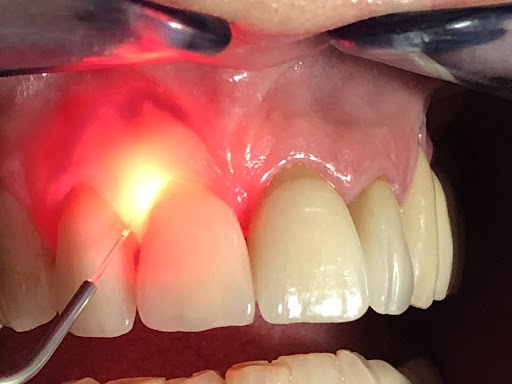
Shopping cart
Subscribe to out newsletter today to receive latest news administrate cost effective for tactical data.
2478 Street City Ohio 90255
- Phone: 77 999 833 29
- Email: info@tinypearls.in
Subscribe to out newsletter today to receive latest news administrate cost effective for tactical data.
2478 Street City Ohio 90255
Gum disease, also known as periodontal disease, is a common oral health problem that affects the tissues supporting the teeth. It starts with gingivitis, an inflammation of the gums caused by plaque buildup. Symptoms include red, swollen, and bleeding gums. If untreated, gingivitis can progress into periodontitis, a more serious stage where the gums pull away from the teeth, bone support is lost, and teeth may eventually loosen or fall out.
Periodontal disease is not just a problem of the mouth—it can affect overall health. Research shows links between gum disease and conditions such as diabetes, heart disease, respiratory issues, and even complications during pregnancy. This makes timely diagnosis and treatment crucial.
Gum disease is often painless in its early stages, which is why many people ignore it until the damage has advanced. Regular dental check-ups and professional cleaning are essential to catch it early and prevent long-term harm.


Healthy gums are the foundation of a healthy mouth. Without strong gums and supporting bone, even the healthiest teeth cannot stay in place. Treating gum disease is essential for several reasons
Advanced gum disease is the leading cause of tooth loss in adults.
Reducing gum infection lowers the risk of systemic diseases like heart disease and diabetes complications.
Gum infections often cause chronic halitosis (bad breath) that won’t go away with brushing alone.
Treatment reduces swelling, bleeding, and pain, helping patients chew and smile comfortably.
People who have crowns, bridges, or implants need healthy gums to support these restorations.
Ignoring gum disease is risky—it progresses silently but can cause permanent damage. Early treatment not only saves teeth but also contributes to better long-term health.
Treatment depends on how severe the gum disease is. Dentists and periodontists (gum specialists) use different techniques based on the stage of infection
Common Symptoms Include:
o In mild cases, a deep cleaning removes plaque and tartar from above and below the gum line. Root planing smoothens the tooth roots, helping gums reattach.
o Antibiotic gels, mouth rinses, or oral medicines may be prescribed to control infection.
o Flap Surgery: The gums are lifted to clean deep tartar deposits, then stitched back in place.
o Bone Grafts: Replaces lost bone around teeth with natural or synthetic material.
o Soft Tissue Grafts: Adds gum tissue where recession has exposed roots.
o Guided Tissue Regeneration: Encourages bone and gum tissue regrowth.
o Laser Therapy: Uses modern laser technology to remove infected tissue with minimal discomfort.
o After treatment, patients must visit the dentist regularly for periodontal maintenance to prevent recurrence.
drinks.The choice of treatment depends on how far the disease has progressed. Early detection usually means simpler treatment and better outcomes.
Dental Conditions That Require RCT:
Sometimes, patients may not experience obvious pain, and the infection may silently spread. That’s why dentists rely on X-rays and pulp vitality tests to confirm the diagnosis.
Ignoring these warning signs can worsen the condition, leading to swelling, abscesses, bone loss, and ultimately tooth extraction. By seeking dental care promptly, patients can save their natural tooth and prevent more complicated, costly procedures later.
It’s important to remember that RCT is not just about treating infection—it’s about preserving the natural structure, maintaining proper bite, and ensuring long-term oral health.
Many people hold misconceptions about gum disease, which delays treatment and worsens the condition. Let’s clear up some myths:
False. Gums should not bleed during brushing or flossing. Bleeding is an early warning sign of gum disease.
Gum disease often progresses silently. By the time pain occurs, significant damage may have already taken place.
Gum problems can affect anyone, even teenagers, especially if oral hygiene is neglected.
Aggressive brushing can actually harm gums. Gentle brushing with proper technique and flossing are more effective.
With modern dentistry, gum disease is treatable and manageable at almost every stage.
Dispelling these myths is vital so patients can seek help early and protect their oral health.
Gum disease may be silent, but its effects are powerful—it can damage not only your mouth but also your overall health. Fortunately, with timely care, most cases can be controlled or even reversed. Professional cleanings, advanced periodontal treatments, and good home care make it possible to preserve your natural teeth for life.
Healthy gums form the foundation of a beautiful, confident smile. Treating gum disease doesn’t just stop bleeding or swelling—it protects your teeth, supports your restorations, and improves your general well-being.
By prioritising gum care and maintaining regular dental visits, you are investing in the strength and longevity of your smile. Remember, a healthy smile begins with healthy gums.
